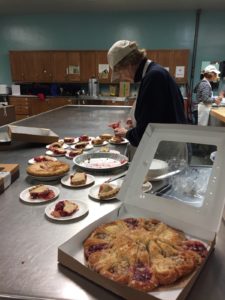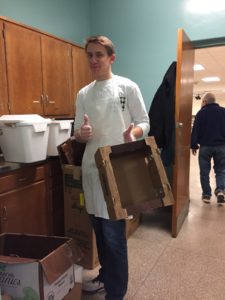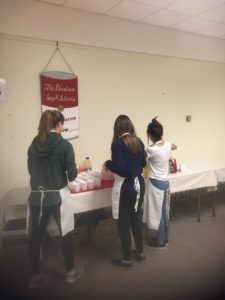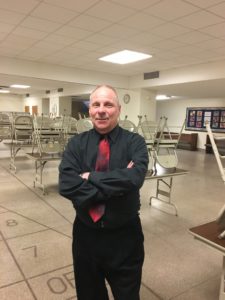Card Sort – Danny Cohen
Date: 2/28/2017
Type: Expert interview with Parent and President of Holy Cross School Board (Including Card Sort)
User: Brian is the parent of 2 daughters, one in 5th grade and one in Prekindergarten. He is the president of the Holy Cross School Board. As the interview progressed, it became clear that he was more of an expert than I realized before, so I got some good insight about enrollment from him. Overall, most of the content of the interview was based around the card sort, though.
Age Range: About 40
Occupation: Facilities Director at Notre Dame
Summary of Interview:
We began with a card sort, where Brian ranked the 4 public high schools in the area in order of where he would likely send his daughters. The ranking was:
- Adams
- Clay-Riley-Washington (All equal)
The only one that Brian had specific knowledge of was Adams, and that was through conversations with peers and friends who were considering sending their kids to that school. He admitted that he did not have a negative image of the other 3, but was more lacking information about them.
We then moved onto the ranking of magnet programs. The ranking was:
- IB
- Engineering-Fine Arts (Tied)
- Medicine
Brian noted that he was intrigued by the potential of an international program like IB, and its ability to help immerse kids in their academic experience. With regard to engineering and fine arts, he noted the importance of a wide breadth of experience when it comes to education, and how specializing in a certain field can sometimes be limiting for kids. He also commented that his kids’ interests and desires would definitely be a factor in deciding schools.
After this, I had Brian rank the internal factors of a school that were most important to him. The ranking was as follows:
- Diversity-Course Offerings-College Preparedness
- Academic Difficulty-Fine Arts-Strength of Staff
- Friends-Sports-Facilities-Technical/Career Classes
In his Holy Cross School community, diversity was a huge factor for him, both racial and socio-economic, and he will be looking for that as a parent when looking at schools for his kids. He also noted the importance of college preparedness for his kids. Finally, he was adamant on the significance of a wide offering of courses, and a diverse academic experience for his kids.
The next card sort we did was a ranking of the factors that would most turn Brian AWAY from a particular school. In order of most important to least important, he ranked:
- MOST SIGNIFICANT: No AP/IB Programs-Negative Press/Publicity-Fights-Lack of Arts-Low Graduation Statistics-Lack of Academic Rigor
- LESS SIGNIFICANT: Bad Teachers-Few College Admits-Gangs/Thug Culture-Lack of Sports
- (Partway through, he changed the second group to “What do I doubt, or what do I want to know more about”)
Regarding the negative factors about a school, Brian noted his reluctance to believe things until they are backed up by facts or data. As a president of a school board himself, he noted how events can be wrongfully spun in a negative light. Clearly he is going to be very active in his pursuit for information about schools for his kids, and his insight shows how many parents consider a number of different factors when evaluating schools.
The final card sort was related to sources of information that he would use when deciding on a school for his kids. The ranking was:
- Recommendations-Family Ties
- Brochures/Marketing Material-Statistics
- Parent Nights
Brian described that the ranking was more of a process, where he would begin with the sources at number 1 and then work down to 2 and 3.
For him, recommendations are important, but he would be inclined to dig into multiple sources to gather all the possible information. As a school board member himself, he noted the importance of not simply believing everything you hear, and instead digging deeper and asking questions that can lead to more accurate conclusions. The role of a school board should be to facilitate information between parents and the school, and make sure that everyone is informed about the experience that their child could have at a school.
Recommendations/Insights:
- While enrollment is an issue, it’s important to remember that sometimes, families leave schools for reasons that are outside of the control of the school. If people aren’t happy with the diversity at Clay, then Clay shouldn’t necessarily try and change who they are to keep these families. In his mind, schools are strengthened by diversity, and as a diverse school, Clay should seek out families that are looking for this and draw them in.
- Holy Cross is trying to introduce an immersion program at their school where students participate in a two-way immersion track, to support the high Latino population at the school.
- Rather than just thinking about how Clay should change, Brian encouraged them to become more aware of who they are, and highlight and enhance those elements.
- At their last info session, 100% of the people that attended were personally invited. This data supports the importance of peer recommendations, and the way in which word-of-mouth is a powerful tool for sharing information and driving decisions.
- Use parents as resources! Create a group or club where parents can go into the community and “sell Clay”, and help highlight the positive elements of the school.
- For High Schools, feeder schools are extremely important. If possible, Clay should consider partnering with elementary and middle schools to support programs that they have already instituted for their kids. For example, Holy Cross is beginning a two-way immersion program where kids become bilingual through their traditional education. If Clay were to introduce a program that continued this education through high school, they would have a high likelihood of attracting all those graduating students from Holy Cross who want to continue this educational experience. Creating ties with feeder schools is crucial for supporting enrollment.
Significant Quotes:
“Adams is in close proximity to where we live, and I’m aware of a number of families who have had children go to Adams, or are considering going to Adams… Generally positive about different programs they offer.”
“This is more of an information void than an actual ranking. I haven’t explored them in the same way as [Adams].”
“Adams is our default public school option based on proximity and familiarity.”
“Specific familiarity of what goes into an IB program is something I’d need a little more information on.”
“Certainly I would want my child’s feedback…. Their happiness or success in a program could tip the scales a little bit.”
“For some families, these [magnet] labels might be important, and for others not so much”
“Racial and socioeconomic diversity enriches the classroom, enriches the school community, enriches a lot of the other pieces. I very much value that.”
“Study anything, do everything could apply at the high school level as well.”
“It’s going to be important to me as a parent that the school prepares my student for college.”
“I would be drawn to data… That could be a number that could be significant, but I’d want to dig a little deeper.”
Regarding technical classes: “I don’t see this particular coursework as being applicable right after high school.”
“This is a rumor mill category. This is data that I could gather that could be a factor.” (Relating to negative factors that might influence his decision)
“A lack of arts would be a gap in the experience or education that I would want for my children.”
“Is the negative press and publicity true?”
“I think it’s possible if the people I trust were vocal enough that I would already dismiss the school.”
“If I heard something negative, I would explore how the school is handling it.”
“I would be drawn in by positive information about the school, but would want the negatives to be addressed at a parent night or meeting.”
“We’ve had some dwindling enrollment over the last decade.”
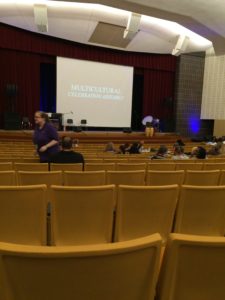
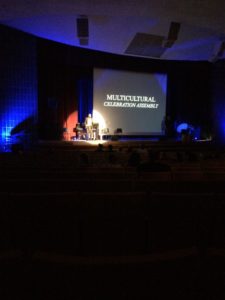
 le, age 56
le, age 56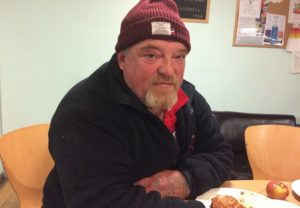
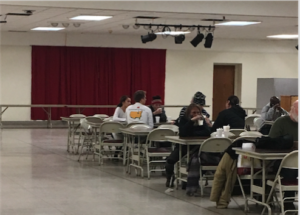 Date: 3/3/2018
Date: 3/3/2018


